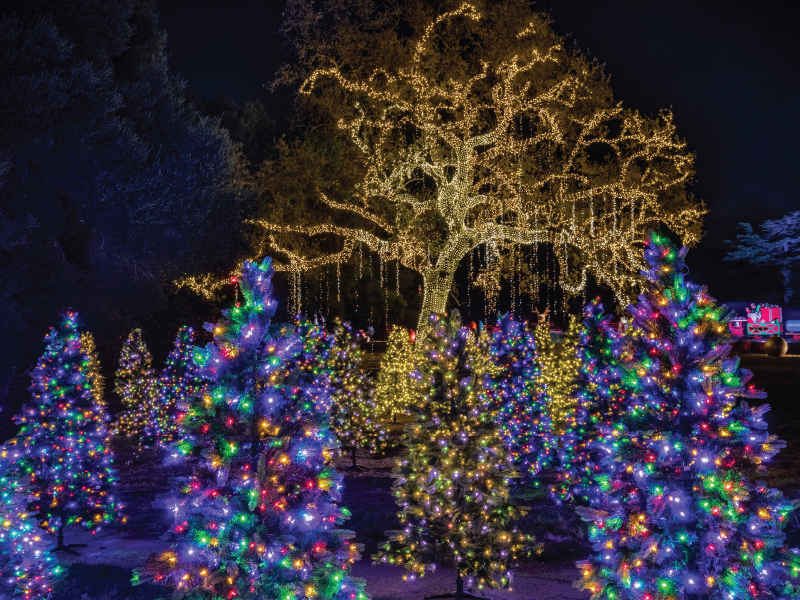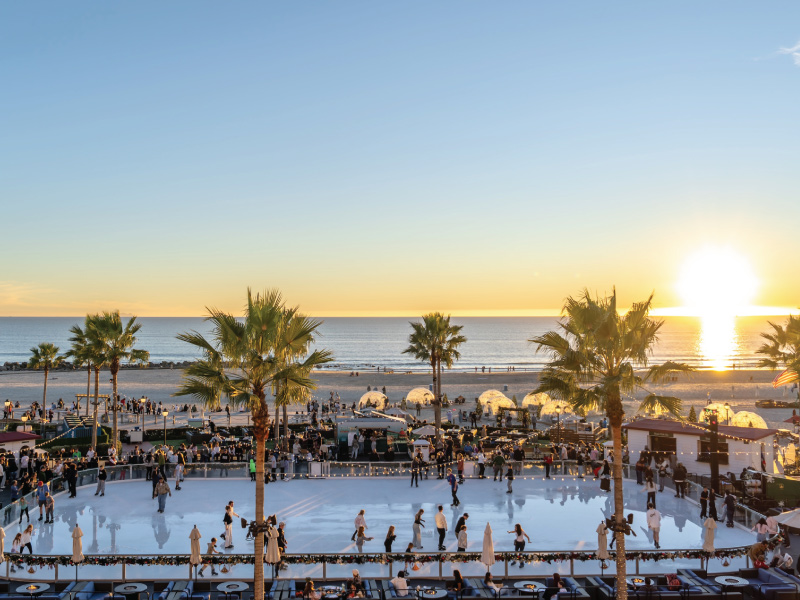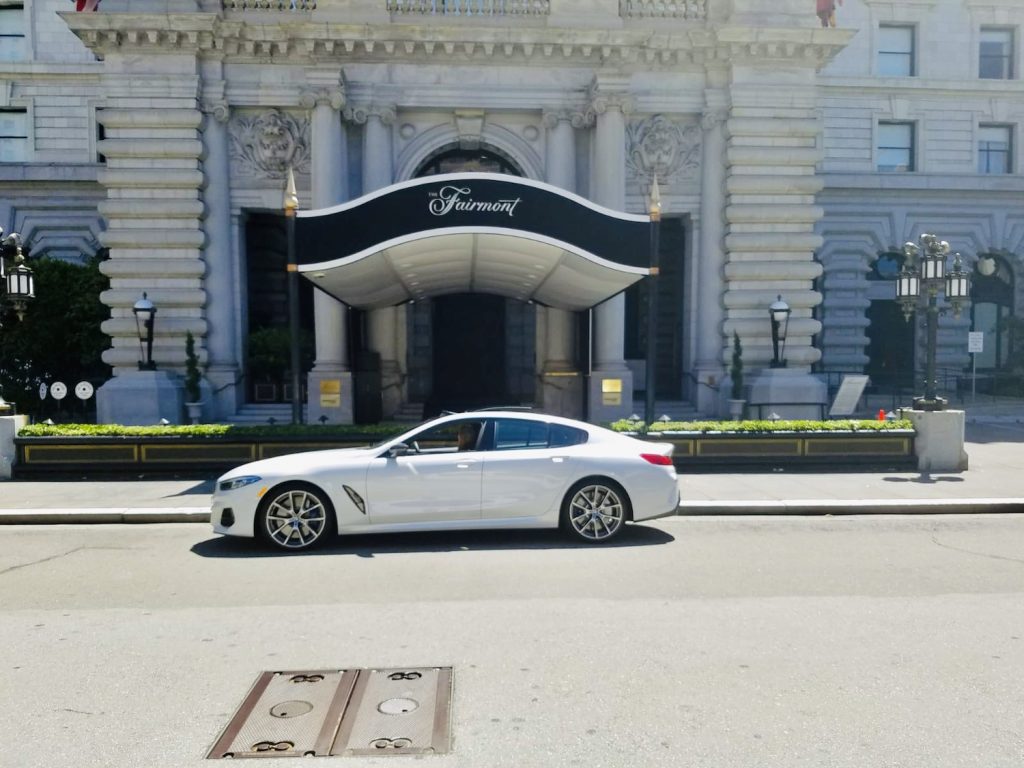
Highlights high and low on San Francisco’s 49-Mile Scenic Drive.
Great cities tend to be judged on what’s indoors. The indoors of museums, the indoors of restaurants, the indoors of theaters, shops, nightclubs, galleries and historical buildings. But what do you do when what’s inside has been ruled out? You get reacquainted with the outdoors—which is how I found out, purely by chance, that I live on San Francisco’s 49-Mile Scenic Drive. Literally.
It was a surprise when I noticed the 49-Mile Scenic Drive sign a half a block away after being cooped up indoors for months. The route, including my block, was designed in 1938. Because it’s a drive, most of its highlights can be experienced outdoors.
Additional inspiration: I had use of a nicely loaded, 2020 BMW M850i xDrive, V-8, twin-turbo coupe, thanks to a partnership with BMW USA. Seriously, if there’s any city where it helps to have horsepower for climbing hills and great handling for twisty streets, it’s San Francisco!
We tested both almost immediately.
With Where Traveler publisher Nikki Wood at the helm, our first stop was Nob Hill, home to the Fairmont, the Intercontinental Mark Hopkins and the Huntington Hotel and higher than any natural feature in Florida. Across from pocket-size Huntington Park is the soaring Grace Cathedral, a Gothic Revival landmark whose twin-towered face recalls Paris’ Notre Dame cathedral.
We had climbed up to Nob Hill from Union Square; what goes up in San Francisco has to come down and it seemed entirely plausible that we might travel farther vertically than horizontally. We dropped a couple hundred feet on Jones Street, gained much of it back on Union and Hyde streets, then followed the signs for Lombard Street.
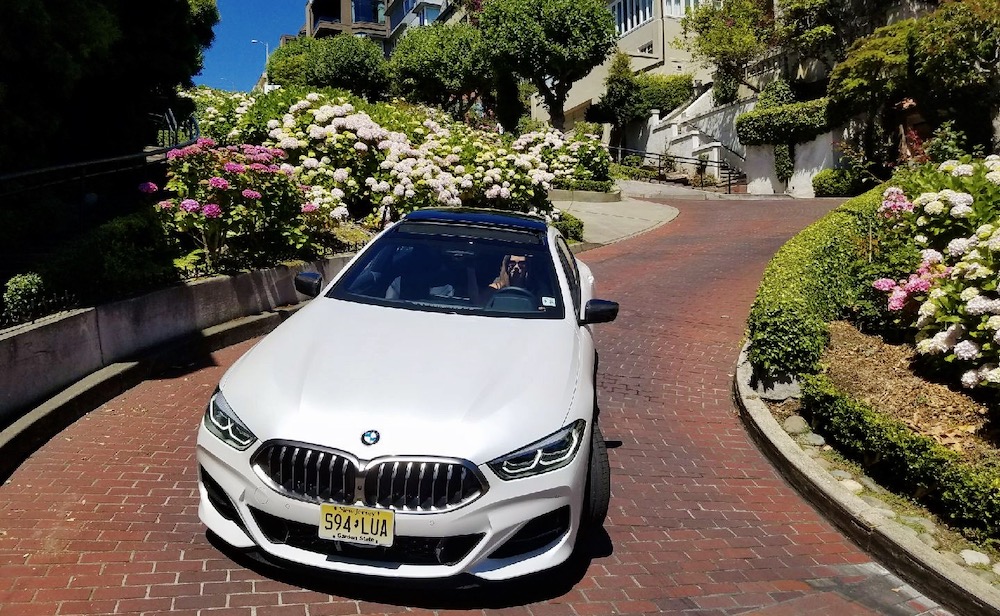
Lombard Street as a whole is unremarkable, most of it a broad avenue that funnels drivers toward the Presidio and the Golden Gate Bridge. But a single block of Lombard is so ridiculously steep, even by San Francisco standards, that engineers in 1922 rebuilt the straight road to have eight hairpin turns. Add flower-filled gardens between the curves and the improbable street became a San Francisco icon.
We dropped more than 100 feet in a single block; repeat seven more times. It was a fun ride in the M850i; it was almost as much fun at the end to look back and watch the other cars coming down like a multicolored shimmying snake.
We drove east, crossing North Beach with its shops and Italian bistros, then gained altitude again. Telegraph Hill—named in the late 1800s for a signal building on top that could “telegraph” the nature of ships coming into harbor using semaphor— is better known these days as the foundation for Coit Tower.
We drove up the narrow street that almost circles the hill then parked in the morning shadow of the 210-foot monument. Finished in 1933 during the Depression, the tower was built with money from wealthy eccentric Lillie Hitchcock Coit, a patron of the city’s firefighters. (Historians say rumors that it was designed to resemble a firehose nozzle aren’t true.)
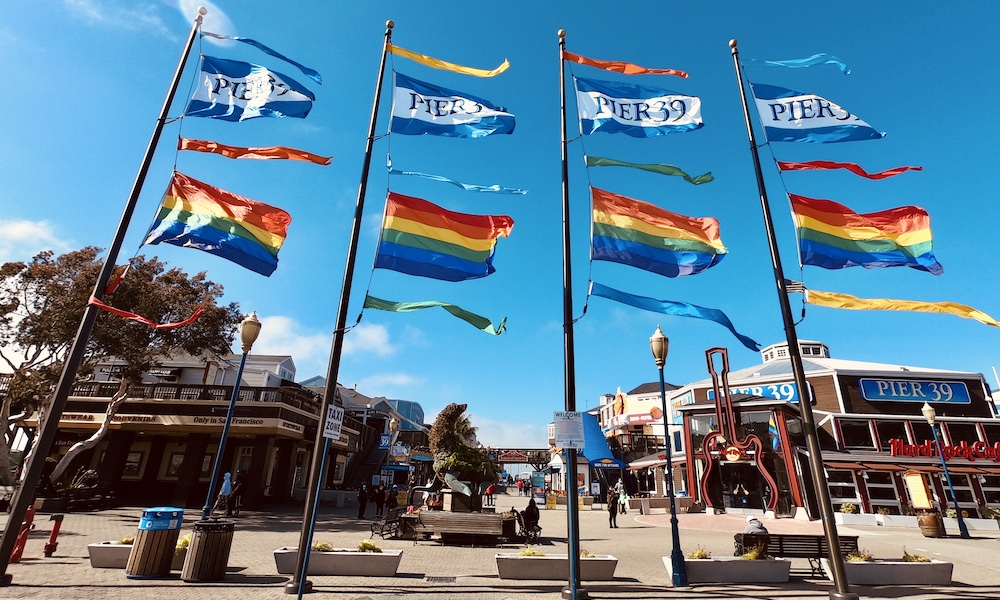
We took in the breathtaking views of the city, bay and bridges in almost every direction from the tower; it was easy to spot our next stop, half a mile away. The waterfront and the neighborhood around Fisherman’s Wharf has been home to the fishing fleet since the 19th century; it’s now also a dining, shopping and entertainment district—San Francisco’s most popular visitor destination.
We drove along the Embarcadero past Pier 39, then along Jefferson Street where, even from the car, we could admire the still-active fishing wharfs and legacy seafood restaurants around them. Nikki steered the BMW past the San Francisco Maritime Historical Park then up the hill to Buena Vista Cafe, a historical restaurant widely considered the birthplace of Irish Coffee. As the passenger, I could sample the frothy drink—solely for journalistic purposes, of course.
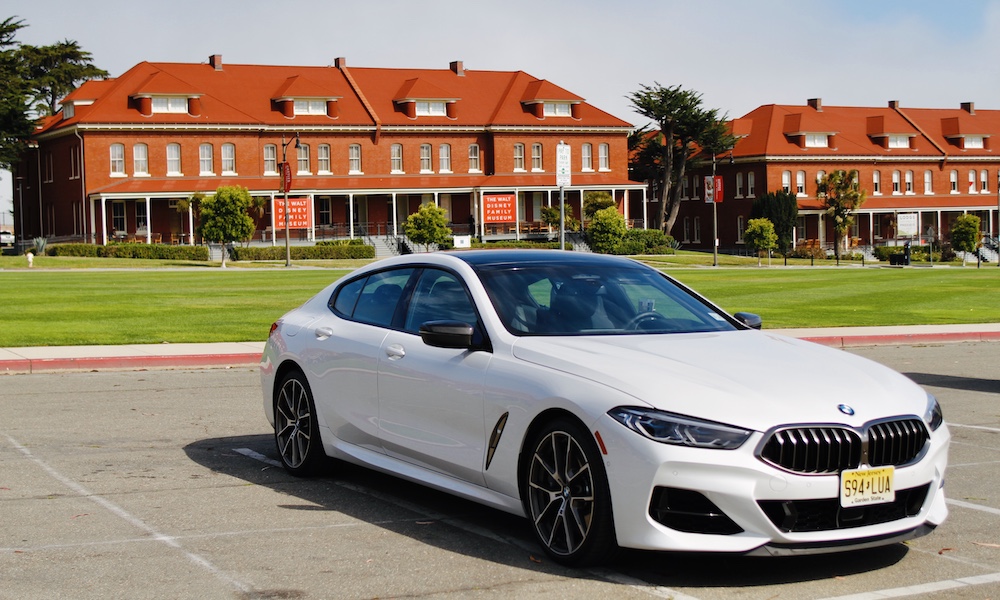
The route to The Presidio took us past Fort Mason, a former base that’s part of the park system now, as well as the Marina Green, a lengthy, sprawling belt of lawn popular with runners, bikers and sun worshippers. Once past the marina itself, we turned into the Presidio, a former military base in turn under Spanish, Mexican and U.S. rule, now part of the National Park Service.
Among its attractions are hiking trails through forests, rugged coastline with Instagram-worthy beaches, and historical buildings including barracks that now house the Walt Disney Family Museum. We stopped on the Main Post to enjoy the grassy former parade grounds and sunshine, then drove up through forests and by officers’ mansions to a lookout point for views of the bay and Alcatraz.
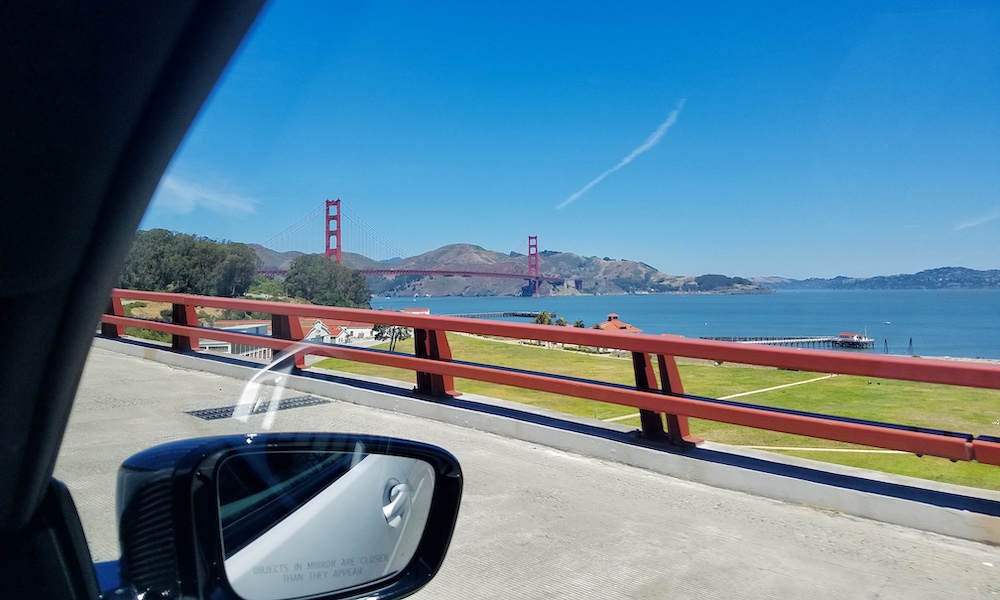
Most of the land at the southern anchorage of the Golden Gate Bridge is part of the Presidio. We cruised up Lincoln Boulevard and, after a detour through the mostly undeveloped Fort Winfield Scott, we crossed what is arguably the most recognizable bridge on the planet. The massive Art Deco towers, arches and supports have supported the 1.7-mile roadway since 1937. Walking across it is a true San Francisco experience; noticing the wind buffeting walkers, I was glad to be in a car this time.
We took the first exit after the vista point at the bridge’s north end of the bridge, steered down toward the waterfront enclave Sausalito, then doubled back to Fort Baker. The former base is now home to Cavallo Point Lodge, a luxury hotel and spa built into the historical structures. We drove toward the water for our final stop near Moore Road Pier and a stunning up-close view of the Golden Gate Bridge and San Francisco beyond.
It had not been 49 miles, but it had been a scenic drive, enough to get a real taste of the town. Even if you’re just getting reacquainted.



